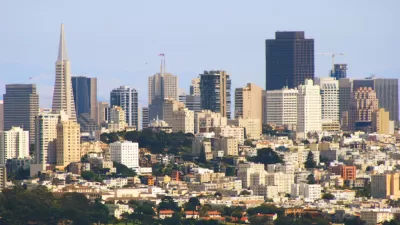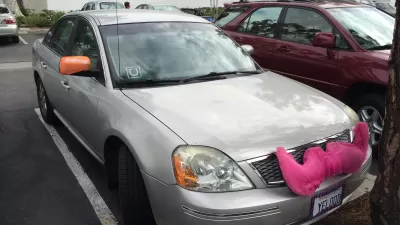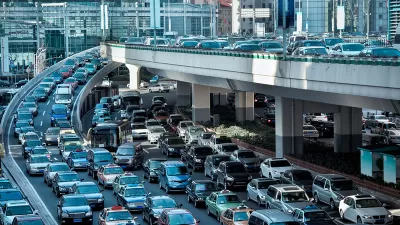Even as innovations like ridesharing take hold in tech-friendly San Francisco, the percentage of trips taken by personal auto is stuck at just under 50 percent.

The San Francisco Municipal Transportation Agency released the results of a survey indicating that the use of private cars in the city has changed hardly at all since 2012. That's mostly good news for the city, because only 48 percent of trips are taken by private automobile—and only 27 percent of trips are taken by solo drivers. The recent numbers contradict an earlier report that suggested that 62 percent of trips were by private car; SFMTA officials insist that their methodology is more accurate.
These numbers indicate that the city is continuing to meet its goal, set in 2012, to keep the percentage of trips via personal auto in the city at or below 50 percent. City officials still worry that the city's growth still puts it on a course for gridlock in the coming years. As well, some contend that rides taken by services like Uber and Lyft—known as TNCs in California—are no better than solo trips because those drivers "are not already going to the destination whereas with carpool, everyone’s going to that destination."
"Even if driving rates haven’t declined significantly in the past three years, the new data adds to the growing body of evidence that SF isn’t as car-dependent as opponents of reallocating street space to other modes often claim." In fact, Census data suggests that 88 percent of new households added to San Francisco between 2000 and 2012 were car-free.
FULL STORY: New Data Shows Most Trips in SF Are Made Without a Private Automobile

Planetizen Federal Action Tracker
A weekly monitor of how Trump’s orders and actions are impacting planners and planning in America.

Restaurant Patios Were a Pandemic Win — Why Were They so Hard to Keep?
Social distancing requirements and changes in travel patterns prompted cities to pilot new uses for street and sidewalk space. Then it got complicated.

Map: Where Senate Republicans Want to Sell Your Public Lands
For public land advocates, the Senate Republicans’ proposal to sell millions of acres of public land in the West is “the biggest fight of their careers.”

Maui's Vacation Rental Debate Turns Ugly
Verbal attacks, misinformation campaigns and fistfights plague a high-stakes debate to convert thousands of vacation rentals into long-term housing.

San Francisco Suspends Traffic Calming Amidst Record Deaths
Citing “a challenging fiscal landscape,” the city will cease the program on the heels of 42 traffic deaths, including 24 pedestrians.

California Homeless Arrests, Citations Spike After Ruling
An investigation reveals that anti-homeless actions increased up to 500% after Grants Pass v. Johnson — even in cities claiming no policy change.
Urban Design for Planners 1: Software Tools
This six-course series explores essential urban design concepts using open source software and equips planners with the tools they need to participate fully in the urban design process.
Planning for Universal Design
Learn the tools for implementing Universal Design in planning regulations.
Heyer Gruel & Associates PA
JM Goldson LLC
Custer County Colorado
City of Camden Redevelopment Agency
City of Astoria
Transportation Research & Education Center (TREC) at Portland State University
Camden Redevelopment Agency
City of Claremont
Municipality of Princeton (NJ)





























